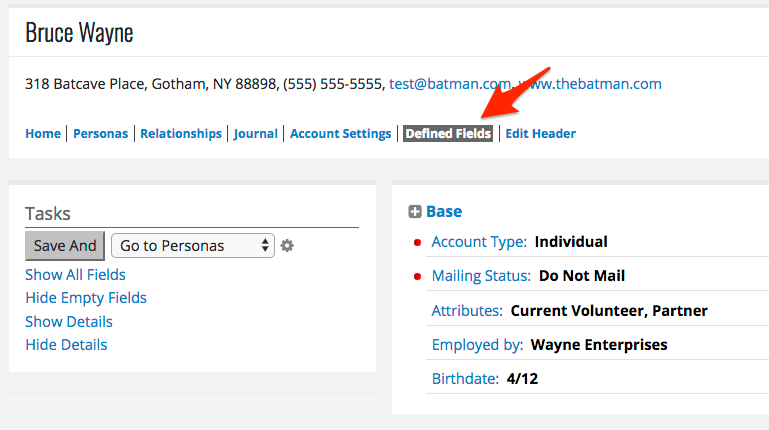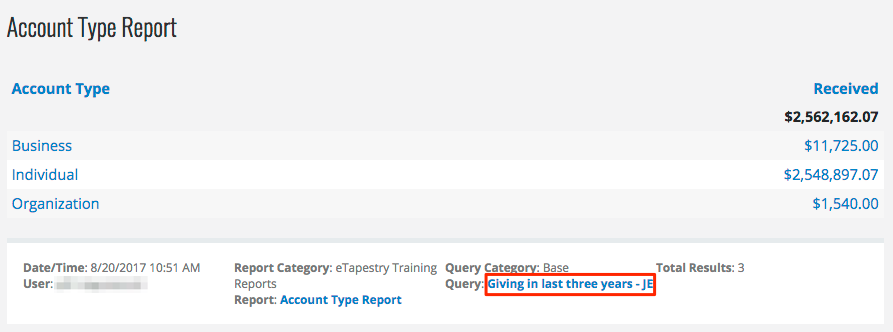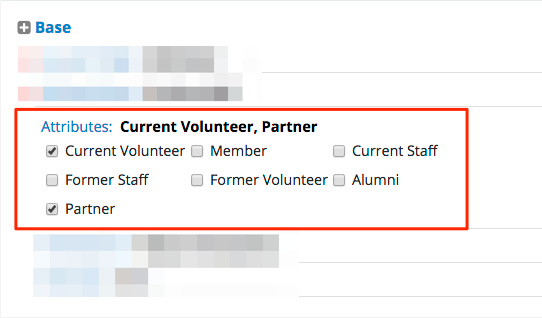How to Use eTapestry UDFs and Codes to Segment Your Donors
Are you looking to segment your donors for more strategic reporting and targeted communications?
Your Blackbaud® eTapestry® database can help.
Blackbaud eTapestry segments donors with custom fields (known as user-defined fields, or UDFs). Create a set of UDFs that is unique to your organization, and start tracking donor preferences, demographics, and attributes in eTapestry.
How to set up user-defined fields (UDFs)
Constituent user-defined fields are universal to the entire constituent account, as opposed to persona-defined fields, which are related to a single persona on that account (where an account may have many personas).
Find your current set of constituent codes on the Defined Fields page of any constituent account.

Whether you are a new or existing eTapestry user, you will likely find a pre-built set of UDFs on the constituent defined fields page. Even new eTapestry databases include some constituent user-defined fields options out of the box.
You may find that your current fields aren’t enough or they don’t quite fit your strategies though. If that is the case, you will need to build custom fields and field values for the donor segments that better match your organization’s fundraising methods.
But before building new user-defined fields in eTapestry, start with a blueprint. A blueprint is an outline of the field names, types, and values you plan to build in eTapestry.
Blueprinting is an important strategic process that will help you to set up your database for success. With a blueprint, map out your custom fields first and then confirm them before building the real structure in your eTapestry system.
Fields in eTapestry cannot be deleted (only disabled), so blueprint your desired fields before building them in your database. A blueprint will lead to a cleaner, healthier, and better-organized database!
How to segment constituents in eTapestry
Donor segments will vary from organization to organization. Your fundraising plan and how you intend to connect and cultivate donors will define your donor segments. As a result, the segments suggested in this guide may not be a perfect fit for your organization. Adapt and expand on these suggestions to match your segmentation objectives.
Account Type
Blackbaud eTapestry databases come standard with the Account Type field, but some older databases are missing this field. Account type is a must-have field in eTapestry, so plan to add it if it isn’t currently in your database.
Account type is the entity classification for a constituent account. It can be used to segment constituents by entity for communication or prospect lists, but it can also be used to measure giving totals by entity.
Common values for account type include:
- Business
- Individual
- Organization
- Foundation
- Hospital
- School
- Government
With an account type field, you can segment constituents for a mailing or email list. You can also run reports on total giving by account type, which is a common report for most development teams.

There are many ways to use this field but only if every account has a value assigned. You can ensure every account has an account type by making this user-defined field required.
Mailing Status
Mailing status is another field that comes standard with most eTapestry databases. This field is critical for any eTapestry user that sends direct mail.
Your email service provider, like MailChimp, Constant Contact, or eTapestry mass email will manage unsubscribes and list preferences automatically, but the mailing status field must be flagged manually in eTapestry.
Use the mailing status field to exclude accounts from mailing or distribution lists.
This field should include opt out field values for:
- Do Not Mail
- Do Not Solicit
- Bad Address
- Deceased
- Not Head of Household
- Inactive
In most cases, each status value in the mailing status field is exclusive of the others. This means that a constituent would only ever have one value selected. Make this field a single-select field and only add values that are related to direct mail status (do not add email, phone, or other communication restrictions to this field).
Attributes
While eTapestry’s primary role is to serve as a donor database, you can also use it track other roles and groups like volunteers, board members, staff members, committee chairs, members, and community partners.
An user-defined checkbox field for attributes might include values like:
- Current or Former Staff
- Current or Former Board Member
- Current or Former Volunteer
- Community Partner
- Member (or a specific member level)
- Student or Alumni

You can also add separate fields for these values to capture granular segments. For example, track board membership status in a separate field.
![]()
Interests
If you host events, send a monthly newsletter, announce programmatic achievements, or manage a group of volunteers, the types of communications you send to your constituents is diverse, enough that not everyone will want to hear about every topic and receive every piece of mail or email.
Constituents have preferences and interests that may require asking them what types of information they want to receive from you.
Use a checkbox (multi-select field) on the constituent account to track interests. Each value in the user-defined field should identify separate types of communications the constituent might receive from you, like interest in events, interest in a certain program or initiative, interest in announcements and achievements, and so forth.
Keep constituent profiles up to date
Remember to keep your data up to date. Segments and the data they are based off of, generally change over time. A donor’s profile, interest, and relationship with your organization will change as well. Timely data entry of constituent codes is the best way to maintain high-quality, accurate data in eTapestry.
Beyond that, we recommend reviewing your segments on an annual basis. This should align with your annual planning processes.
Clean up constituent codes and user-defined fields
If you are looking to start fresh with a clean set of codes and user-defined fields, we can help. Using bulk procedures like mass updates and a process we call “mass edit,” we can save you time while helping you to build new donor segmentation, migrate old data, and update existing accounts. Contact us to schedule a free consultation and explore your options.
Free Download
The Essential Kit to eTapestry Best Practices
- 4x PDF Guides
- 1x Template/Worksheet
- 1x 60-minute Webinar
- Here we can add a benefit, or we can delete one.
Join the 700+ users that already got their kit!
DOWNLOAD NOW